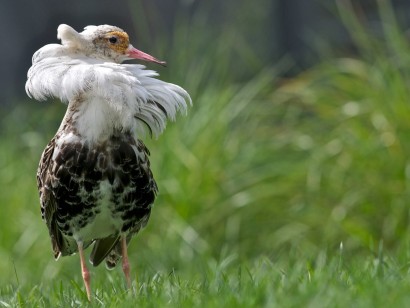Netherlands Birding Tour 2025
Day 1 – Arrival
After arrival in Amsterdam, the group met at the hotel where the guides outlined the tour ahead.
Day 2 – Vogelmeer and Keukenhof gardens
We kicked off with a visit to the Vogelmeer, part of the National Park Zuid-Kennemerland. On the entrance road we were treated to several singing Common Nightingale, one virtuoso male giving us exceptional views as he perched unusually in the open. Due to the varying landscape, numerous birds were in and around the lake, clearly visible due to the open vegetation. On the water we saw various species of duck including Common Shelduck, Gadwall, Eurasian Teal and even a late Smew, as well as Little and Black-necked Grebes, Little Ringed Plover, various geese and a Great Cormorant colony. Around the lake we saw numerous passerines, among them Dunnock, White Wagtail, European Greenfinch, Red Crossbill and European Goldfinch. After lunch nearby, we visited the famous Keukenhof gardens, before heading onto Arnhem.
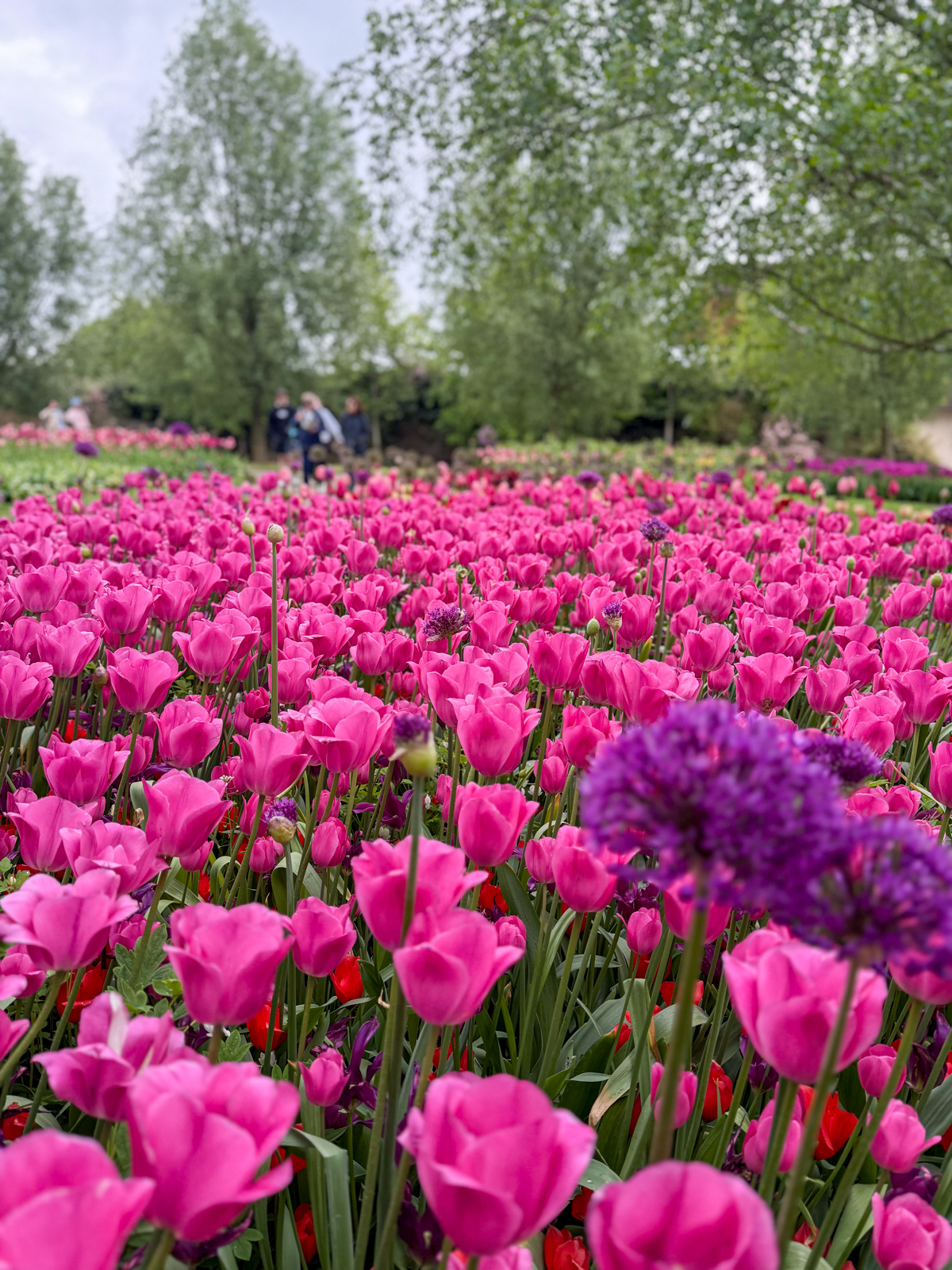
Tulips © F Ratta
Day 3 – Nationaal Park Hoge Veluwe
Our second full day was spent entirely within the wonderful Nationaal Park Hoge Veluwe, a 5,400 hectare privately owned reserve that was founded in 1935. It’s a large reserve with deciduous, coniferous and mixed forest, heathland (wet and dry), grassland, fens and drifting sand landscapes. Almost a hundred breeding bird species occur here. In the forest, Black Woodpecker calls and Common Redstart song tantalised us, but we did see Northern Raven, Crested Tit and European Pied Flycatcher, while on the heathland and forest edges, we saw Woodlark, Eurasian Skylark and European Stonechat, as well as Meadow and Tree Pipits.
In addition to birds, the group saw Roe Deer and, most memorably, a herd of Wild Boar with their striped young as we exited the park. Alas, the Veluwe’s population of Grey Wolf eluded us. After lunch and in between birding, the group visited the Kröller-Müller Museum, one of the country’s finest art museums, comprising a wide cross section of modern European art from Impressionism to Cubism and beyond. The De Hoge Veluwe National Park is indeed special.
Day 4 – Oostvaardersplassen
We headed north to the Oostvaardersplassen, a fantastic place to watch birds and a must see in The Netherlands. This famous reserve of 6,000 hectares, now part of Nieuw Land National Park, holds an amazing variety of warblers, waders and waterfowl. It’s the first site where White-tailed Eagle made its comeback in The Netherlands and we were treated to various views of this magnificent raptor, which dwarfed the Western Marsh Harrier that flew alongside them. We moved onto our next base at Meppel where locals are referred to as Meppeler Muggen (‘mosquitoes from Meppel’). This nickname comes from a traditional folktale; the townsfolk thought the church tower was on fire, but after closer inspection, they realised it was only a swarm of mosquitoes. Whether the locals were intoxicated on Advocaat isn’t recorded.
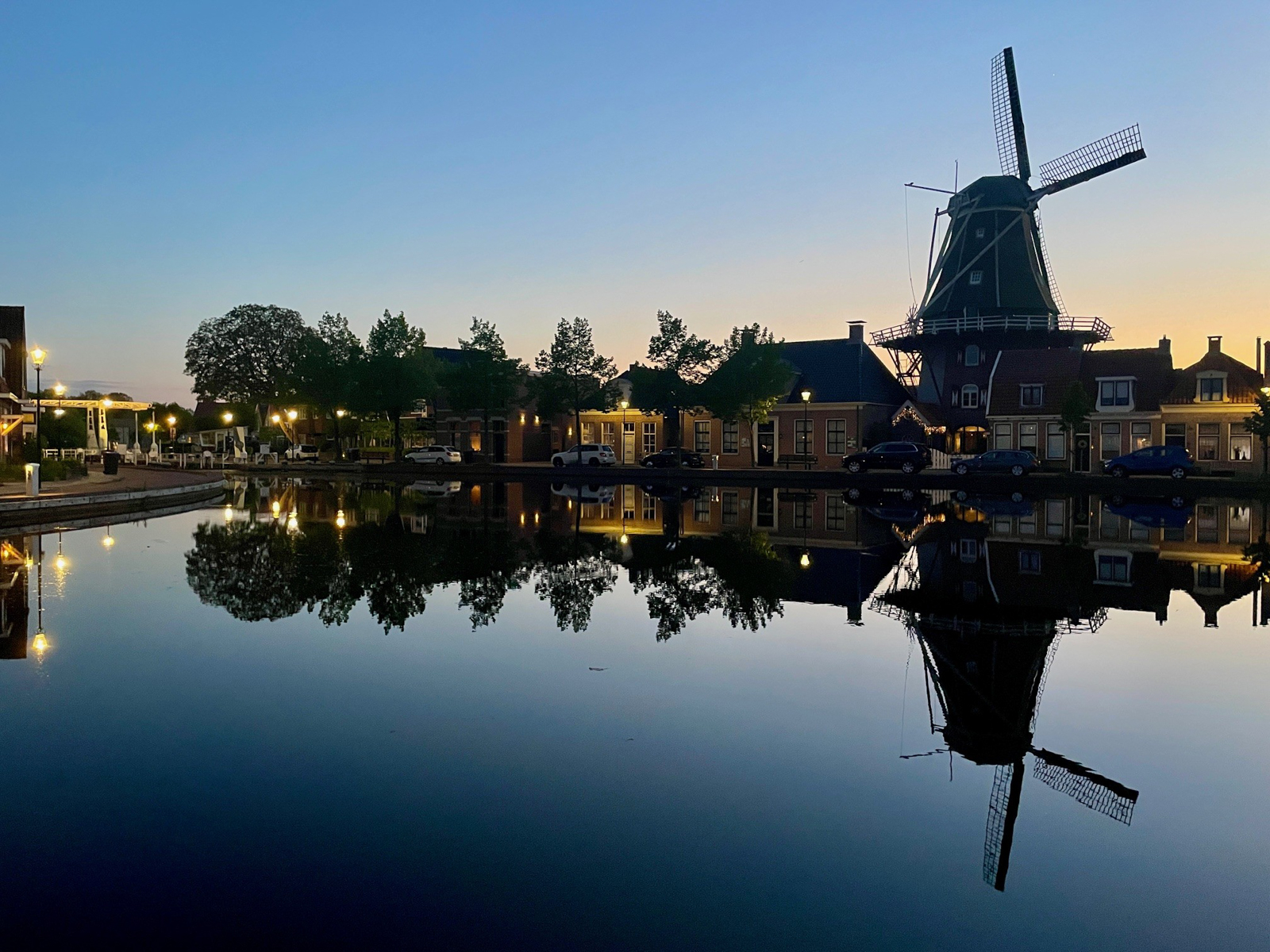
The quintessentially Dutch centre of Meppel © Ed Hutchings
Day 5 – Weerribben-Wieden National Park
The whole of this day was spent within the Weerribben-Wieden National Park. Our first port of call, Wetering West, is located on the southeastern side of the park and consists of the typical landscape of elongated waterbodies with large reedbeds, as well as scattered bushes and trees. These waterbodies are remnants of the old peat extraction, but nowadays provide a great habitat for many bird species, as well as Water Vole, one of which we saw swimming eagerly.
On the northern side of the Rietweg, the landscape consists of a larger waterbody with lots of reedbeds and scattered scrubs, a popular foraging area in spring for Black Tern. We could see them from the road as they passed us by from the south and back again. The reedbeds were alive with atypical species such as Sedge Warbler and Reed Bunting. Small flocks of Bearded Reedling were encountered too, along with buzzing Savi’s Warbler song. Great Egret and Purple Heron were also present, while over the field, Western Marsh Harrier was spotted hunting.
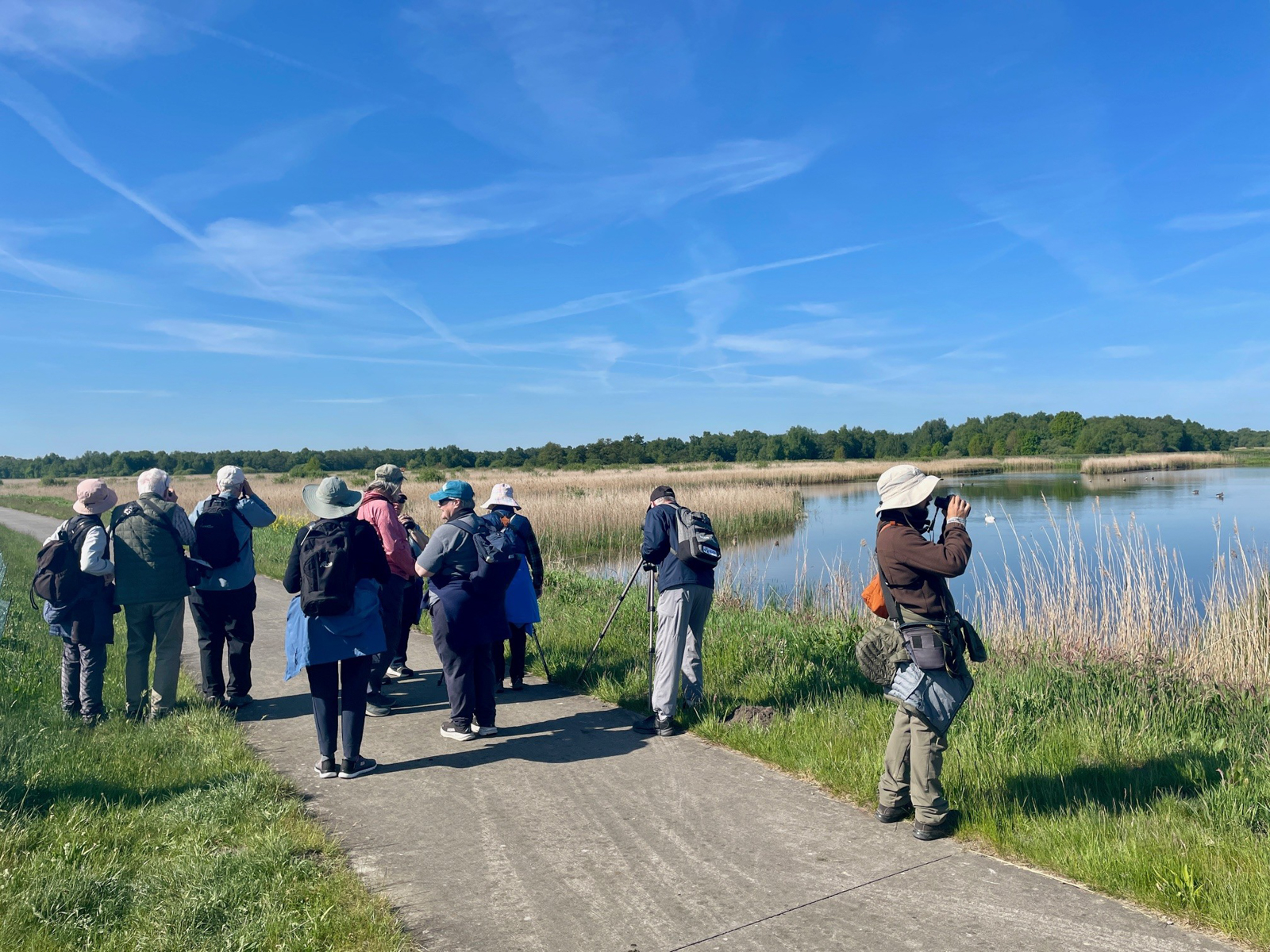
Typical polder landscape at Wetering © Ed Hutchings
We moved onto the Lokkenpolder, also within the national park and another remnant of the old peat extraction, surrounded by reedbeds, small wooded areas and marshy habitats. The area is famous for its Otter sightings and many rare dragonfly species, but it proved to be quiet on our visit, save for a large flock of Greylag Goose and a Mute Swan pair. On the eastern side of the hide, a large busy reedbed rang with the staccato, rambling song of Sedge Warbler. A Purple Heron flew overhead and a Western Marsh Harrier was seen quartering over the field nearby.
After lunch we visited De Auken, with its breeding herons and other reedbed birds thriving in this new reserve. From the observation tower, a sizeable Great Egret and Purple Heron colony provided an entertaining scene. The songs of Cetti’s and Sedge Warblers, as well as Common Whitethroat, filled the soundscape, before we made our way to the ‘Venice of the North’.
Giethoorn’s origins are really rather odd. None gave much thought to this marshy, infertile chunk of land until the thirteenth century, when the local landowner gifted it to an obscure religious sect. Perhaps to his surprise, the colonists made a go of things, eking out a living from local peat deposits and discovering, during their digs, the horns of hundreds of goats, which are presumed to have been the victims of the great St Elizabeth’s Day flood of 1170; duly impressed, the residents named the place Geytenhoren (“goats’ horns”). Later, the settlers dug canals to transport the peat and the diggings flooded, thus creating the watery network that’s become the number one tourist attraction hereabouts and no wonder: Giethoorn is extraordinarily picturesque, its slender brown green waterways overseen by lovely thatched cottages, shaded by mature trees and crisscrossed by pretty humpbacked footbridges. The group enjoyed a boat trip through the town, entertainingly skippered by a local man, to end what had been a fun day.
Day 6 – Dwingelderveld National Park and Fochteloërveen
Our morning was spent in Dwingelderveld National Park, the largest area of wet heathland in Western Europe. Wet depressions and high sand ridges alternate in this extensive national park, where we found heaths, forest, juniper groves, drifting sand and more than forty fens in an area of 3,700 hectares. Common Crane has been breeding on the Dwingelderveld for several years and we were treated to views of a pair bugling in flight, along with a few White Stork. Other birds seen included Common Cuckoo, Great Spotted Woodpecker, Tree Pipit and Yellowhammer.
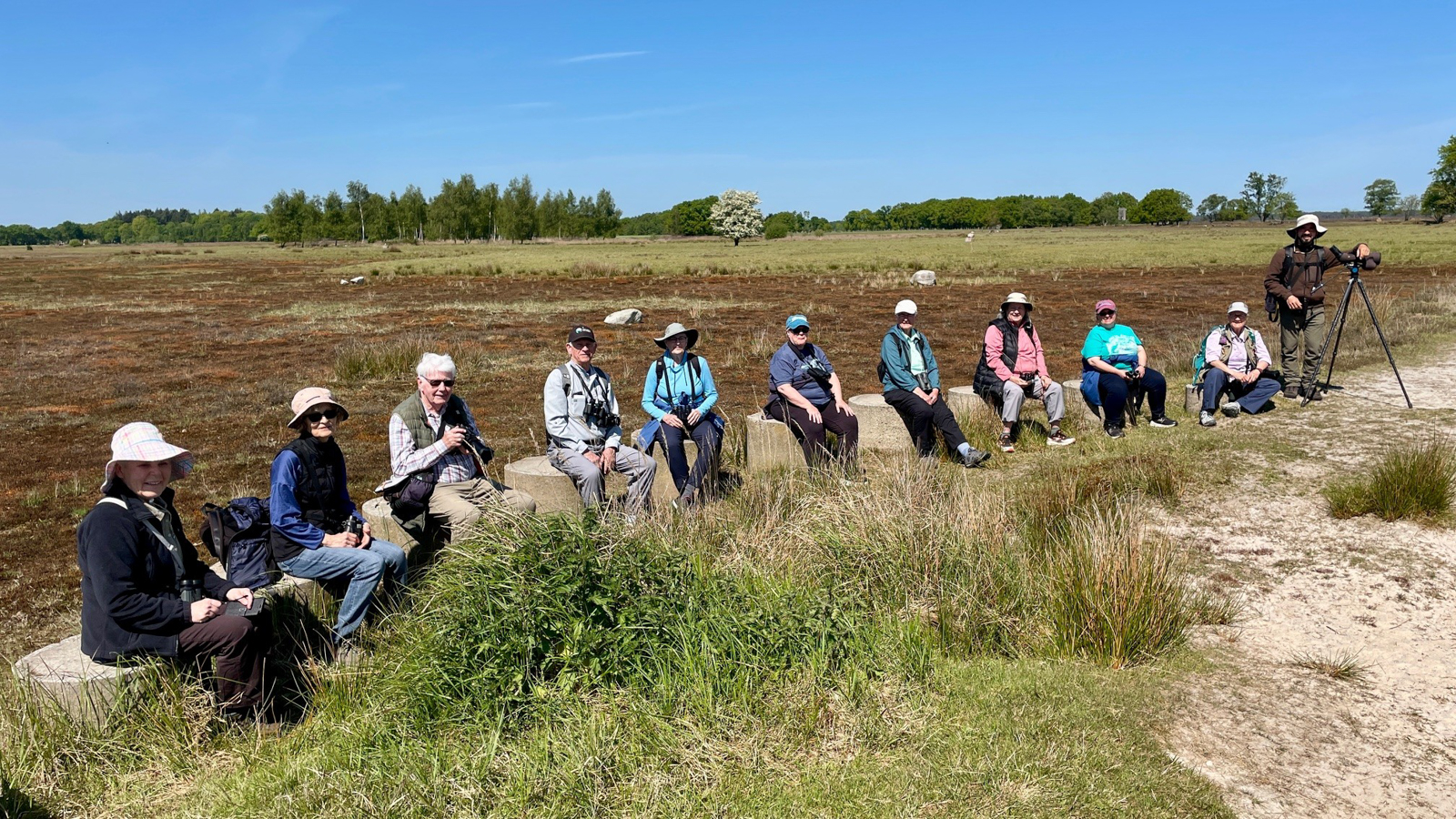
The group takes a well-earned rest on the Dwingelderveld © Ed Hutchings
Our afternoon session was spent at Fochteloërveen, a 2,500-hectare reserve on the border of the provinces of Friesland and Drenthe, one of the few and best-preserved high moorlands in the Netherlands. In 2001, after centuries of absence in the country, Common Crane started breeding again here. Unfortunately, the reserve was quiet, but a short walk threw up Eurasian Blackcap, among a few common species, before we headed to our next base at Leeuwarden.
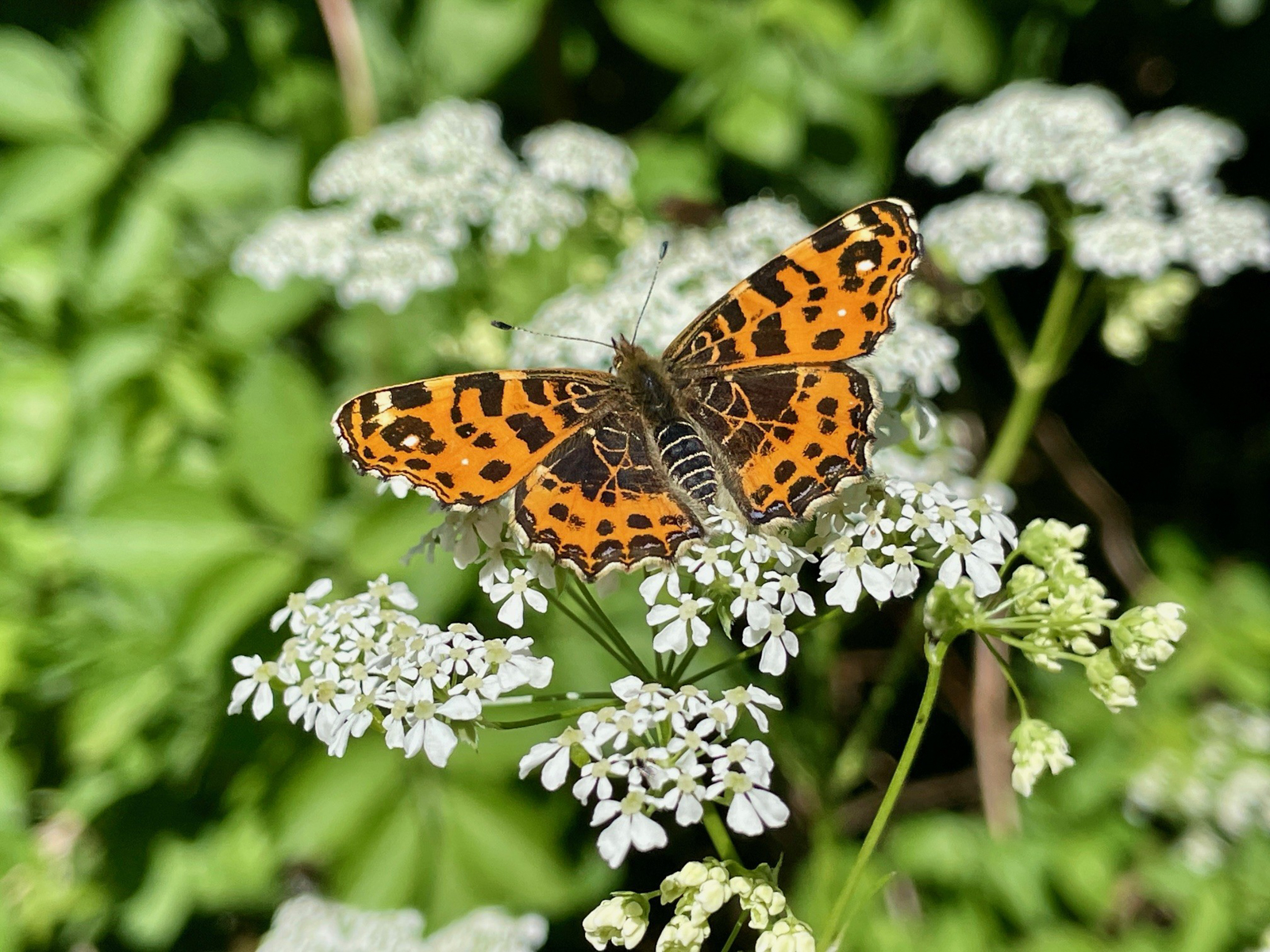
Map butterfly, Dwingelderveld © Ed Hutchings
Day 7 – Lauwersmeer National Park
This day was spent exploring the wonderful Lauwersmeer National Park and we started at Bantpolder, a popular high tide roost and resting site for migrating species in the northwest of the park. Breeding Black-tailed Godwit, Common Redshank and Meadow Pipit were evident, while some remnant wintering flocks of Brant Goose and Barnacle Goose added to the interest.
We moved onto the hide at Jaap Deensgat on its eastern side. Eurasian Bittern was booming, sadly not audible to many, but a Eurasian Wren nest in the hide was entertaining to witness. We moved on to Reitdiep for an alfresco lunch next to its pretty harbour, before heading onto Ezumakeeg on the park’s western side. Many waders were found here, including breeding Black-winged Stilt, but the unquestionable highlight was several Ruff in breeding plumage on the water’s edge right in front of us. A brief visit to the viewpoint at Ezumakeeg Noord provided more views of ducks and waders, as well as a distant White-tailed Eagle, from the comfort of a bench.
Day 8 – It Hegewiersterfjild to Den Helder
Today the group headed back west. Our first stop, It Hegewiersterfjild, held Eurasian Oystercatcher, Northern Lapwing, Black-tailed Godwit and Common Redshank, all breeding in high densities. Pied Avocet and Western Yellow Wagtail were also seen. Various waders were observed including Bar-tailed Godwit, Common and Green Sandpipers, Spotted Redshank, Common Greenshank, Ruddy Turnstone and Dunlin, all seeking refuge from the high tide.
Our next stop was Breezanddijk, a small hamlet on the famous Afsluitdijk. Before the dyke was constructed, the area was a shallow sandbar in the former Zuiderzee and became a working base when construction started. The ‘island’ is mostly covered in low vegetation, scrub and small copses. During migration, these are ideal for passerines that rest here whilst crossing the lake. The waters surrounding the island are what really makes the area a good spot for birding, but the entire area was very quiet on our visit, save for a few pairs of Great Crested Grebe with young. The northern side of the dyke gave the group a great view over the Wadden Sea though.
Having crossed the Afsluitdijk, we sought out the Uitkijktoren Waddenzee, an observation tower with fine views over the Wadden Sea, rather hidden on a pier behind the harbour of Den Oever. Just below us to the left were the saltmarshes of Den Oever, right in front of us were the mudflats of the Wadden Sea and a little further out on the right of the harbour lay the island of Vogelsand, with its large Eurasian Spoonbill colony. From the tower we saw numerous waders, including Eurasian Curlew, Bar-tailed Godwit and Dunlin, as well as a smattering of waterfowl.
After lunch we moved onto Wadplaat Balgzand, usually full of birds because twice a day the endless sand and mudflats become exposed at low tide, attracting all sorts to its buffet of shellfish, worms and snails. Pied Avocet, terns and gulls breed on the saltmarshes formed against the dyke, but the tide was way out on our visit and there was precious little for us to observe. We moved on a short distance to Balgzandpolder, where we encountered Common Shelduck and Eurasian Oystercatcher mostly, before driving to our next base at Den Helder.
Day 9 – Texel
The whole day was spent on the famous island of Texel after taking an early ferry. Nacho had snaffled some bread at breakfast and entertained us by attracting gulls on the journey across. Our first stop was Prins Hendrikzanddijk, a reinforced dyke on the Wadden Sea, three kilometres long and two hundred hectares in size. This varied area consists of tidal flats, mudflats, saltmarshes, beach and dunes, offering respite on our visit to Common Eider, Eurasian Oystercatcher, Pied Avocet, Common Ringed Plover, Red Knot, Dunlin and Eurasian Spoonbill.
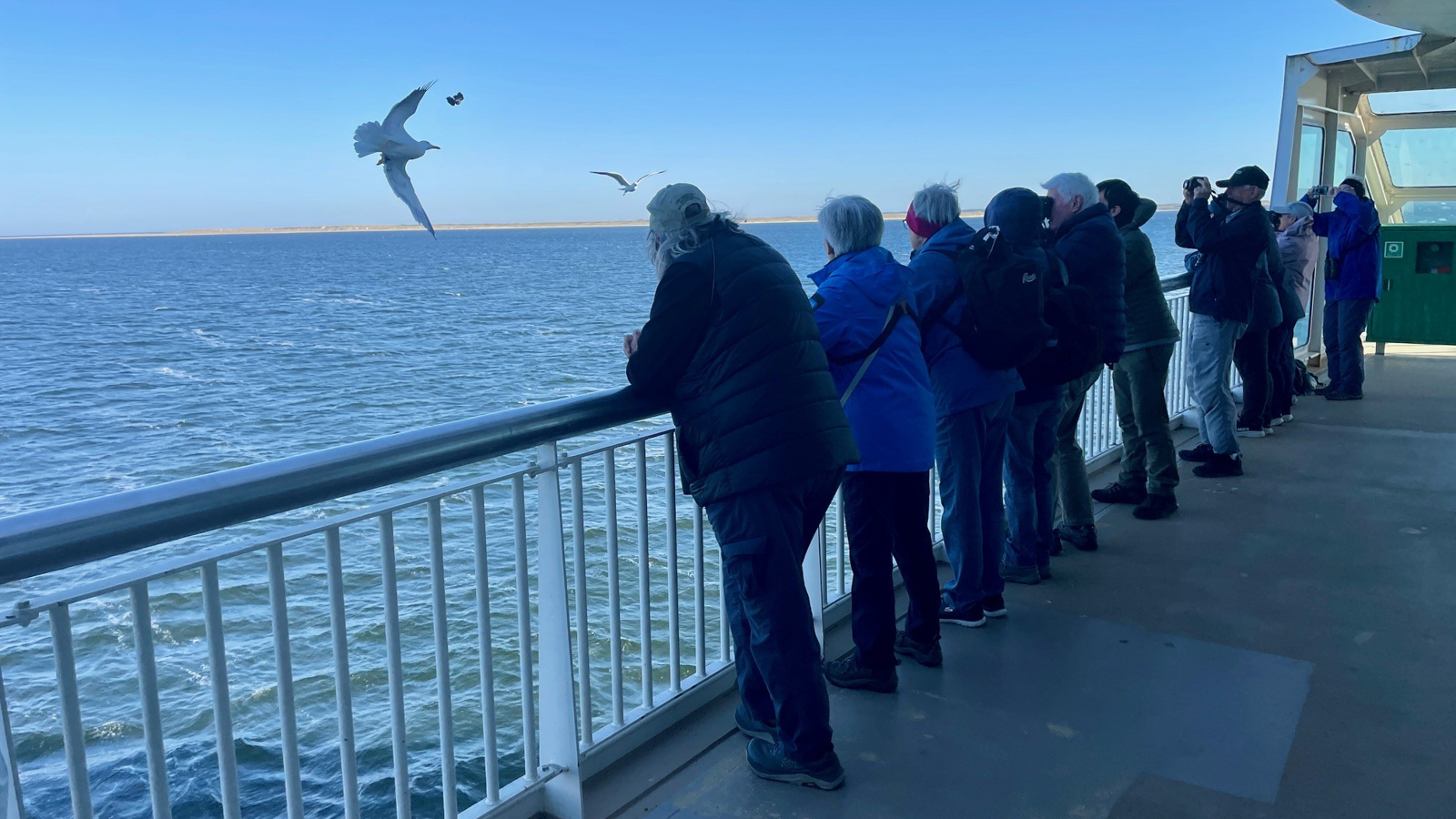
Attracting flyby gulls on the Texel ferry © Ed Hutchings
We moved onto Dijkmanshuizen, a small brackish lagoon, situated near the village of Oudeschild, with several small islands surrounded by pastures and reedbeds. Thousands of waders were roosting, including Bar-tailed Godwit, Red Knot and Dunlin. Other such as Common Ringed Plover, Eurasian Whimbrel and Curlew Sandpiper were also found in smaller numbers. The area is one of the best places on the island to see certain waders such as Little Ringed Plover, Black-tailed Godwit and Ruff. Several migratory Temminck’s Stint were also seen.
Large numbers of Barnacle Goose were breeding here while Common Shelduck was also very numerous. On the water, Northern Shoveler and Eurasian Teal were seen. Several breeding pairs of Western Marsh Harrier are present in this area and a few of them were seen hunting above the surrounding pastures. On the eastern side of the area, a house with a large garden attracts passerines and Common Whitethroat was heard singing. On the surrounding pastures, small flocks of Western Yellow Wagtail were seen and several Eurasian Skylark were in full song.
We continued a stone’s throw onto the nearby Ottersaat, which appeared to have been taken over by breeding Pied Avocet, Common Tern and Black-headed Gull. Here the group enjoyed wonderful views of several Ruddy Turnstone through the scope. We moved onto Wagejot, where the breeding colony of Sandwich Tern is a feast for the eyes and ears. It’s estimated that there are 6,500 breeding pairs here and the noise was absolutely deafening. As it was high tide, lots of waders from the mudflats of the Wadden Sea had also come to roost, including Common Ringed Plover, Bar-tailed Godwit, Red Knot, Ruff and Dunlin. A wonderful morning’s birding.
After an eventful lunch break in Oosterend, the group stopped first at Dorpzicht Observation Point, where many birds were feeding or resting in the immediate vicinity of the observation wall. We then moved to De Robbenjager at the north point of Texel, a typical stopover for migrants, but instead seemed to be attracting a lot of tourists. We cut our losses and headed west to De Slufter on the coast for an alfresco coffee and to enjoy the view over the unique inland tidal marsh. Our last stop of the day was Waalenburg, an old reserve in the middle of Texel where the water level is kept high, giving fine views of the partly flooded meadows from the road. Breeding Eurasian Oystercatcher, Northern Lapwing, Black-tailed Godwit and Common Redshank were clearly visible, while the group also saw different waterfowl species on the flooded meadows. By now it was time to move south and catch the ferry back to the mainland.
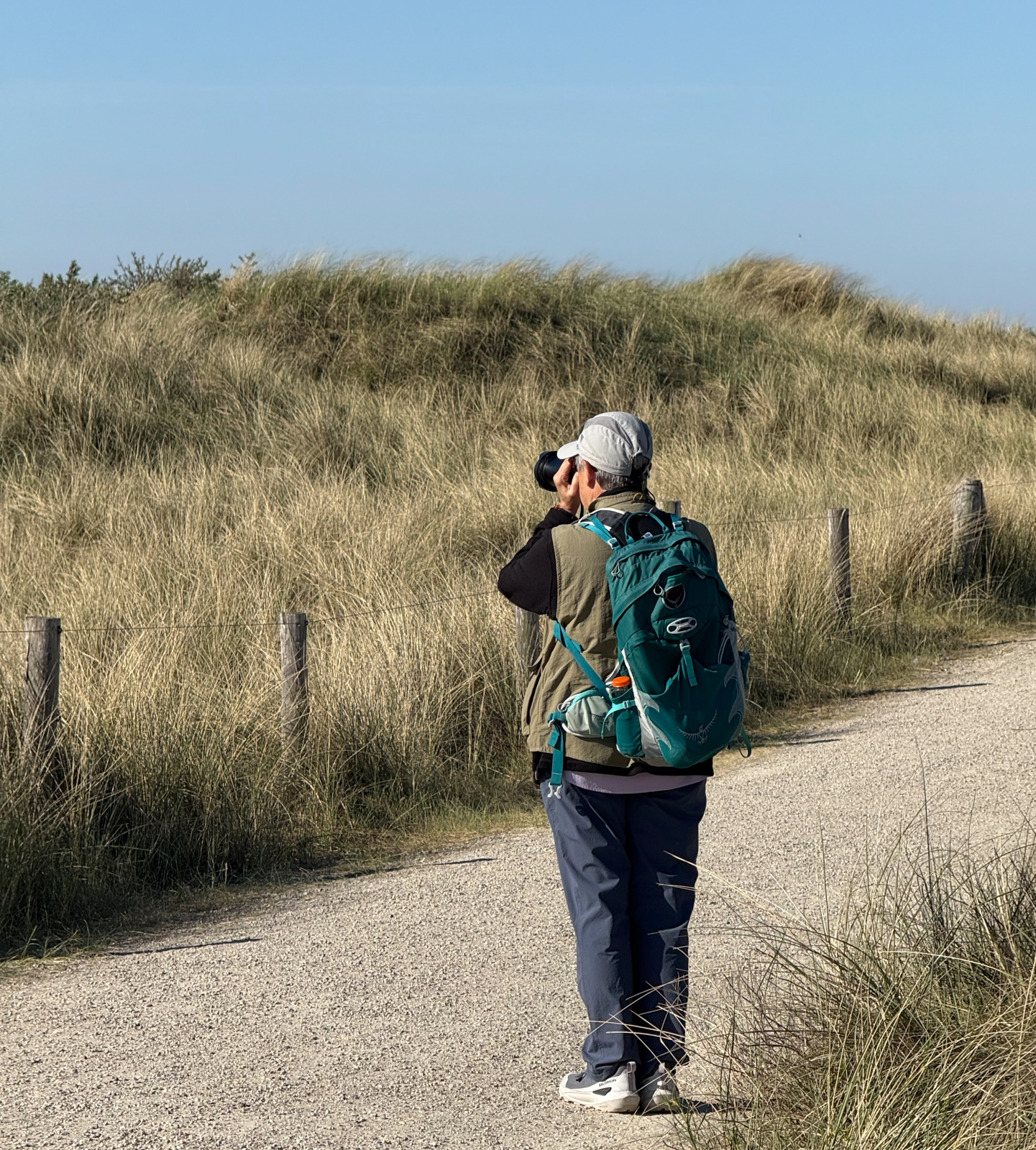
Birding Texel Island © F Ratta
Day 10 – Back to Amsterdam
Our final day saw the group making our way down the west coast back to Amsterdam. Out first stop, De Nollenland van Abbestede, is a relatively new polder that was previously grazed by horses. Now it’s a large puddly marsh surrounded by flowery grassland. The number of birds in this area has increased significantly in recent years and it was a wonderful area to observe different species of waterbirds up close, such as Common Shelduck, Northern Shoveler, Pied Avocet, Black-tailed Godwit, Common Sandpiper, Common Redshank and Eurasian Spoonbill.
A short drive further south brought us to Zwanenwater, a fabulous reserve located in the dunes near the coastal town of Callantsoog. This is a very diverse area of 600 hectares, with views of flower covered dunes, heather dominated heathland and wet woodland. More than seventy-five species breed here annually and the area is on the route of numerous migratory birds. Among the many birds we saw here were Common Cuckoo, Eurasian Spoonbill, Woodlark, Sedge, Common Reed, Marsh and Garden Warblers, Lesser Whitethroat, Spotted Flycatcher, Bluethroat and Tree Pipit. Not to mention lots of wildflowers and a very showy Sand Lizard.
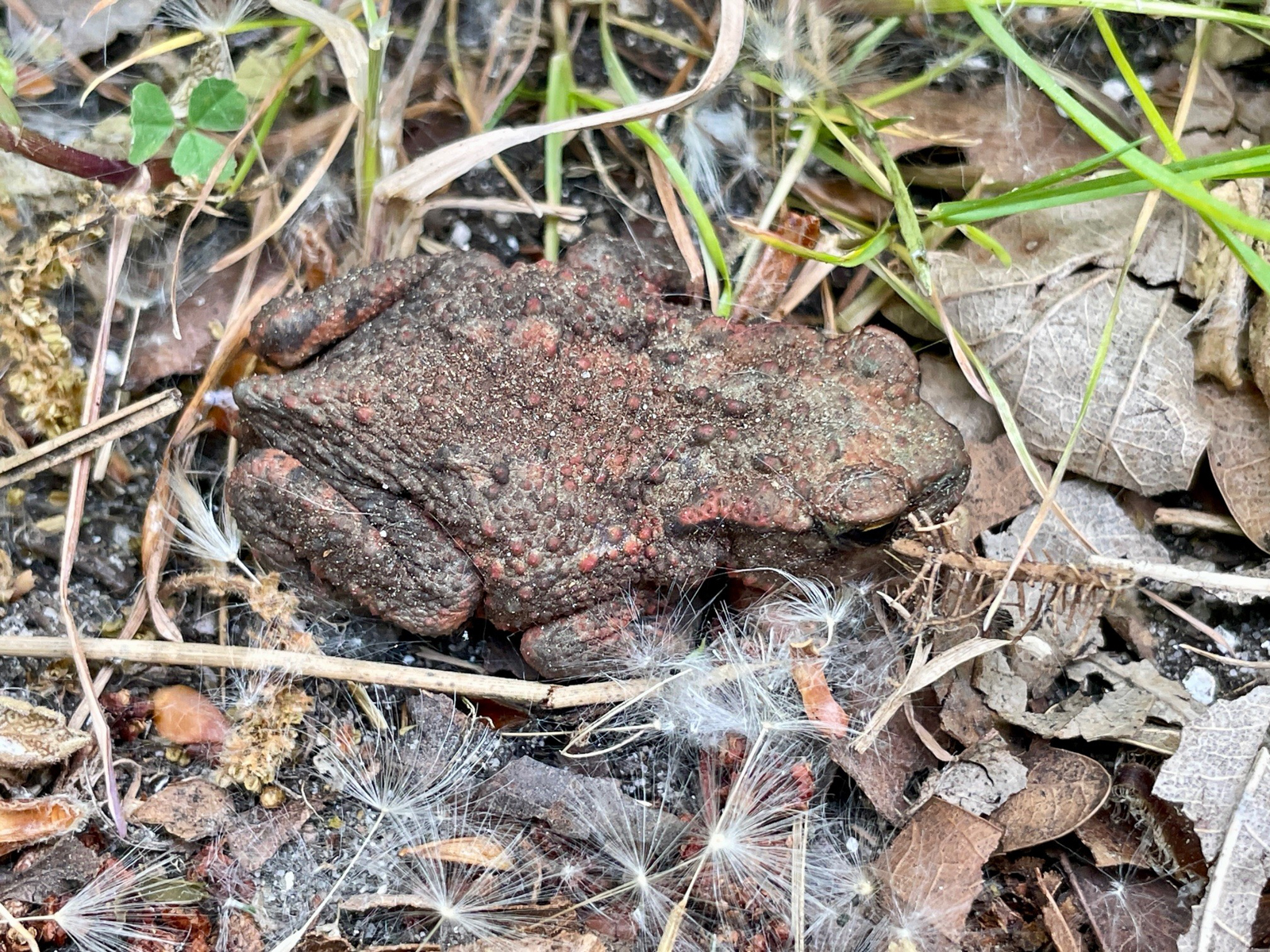
Common Toad, Zwanenwater
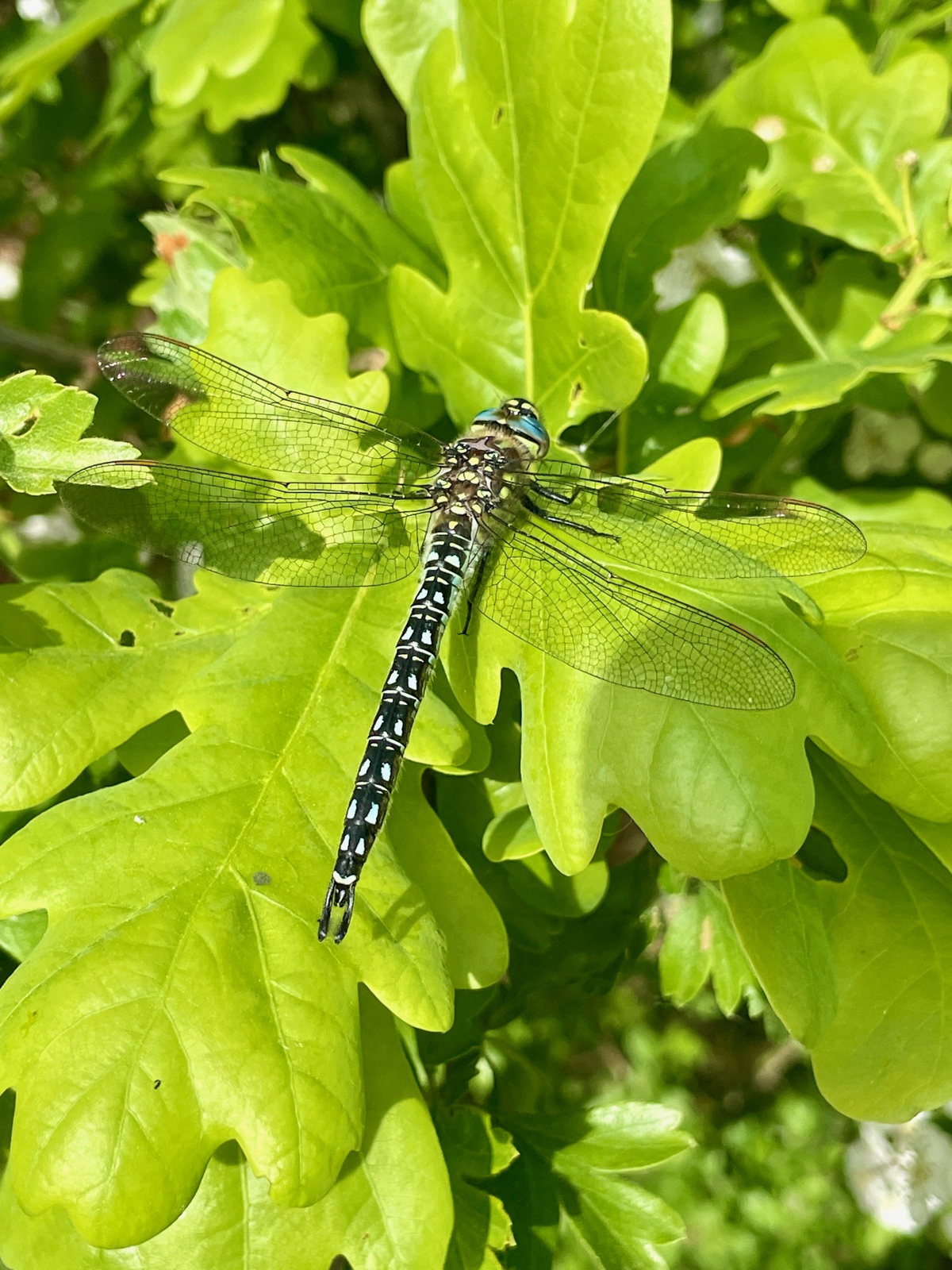
Hairy Dragonfly Zwanenwater
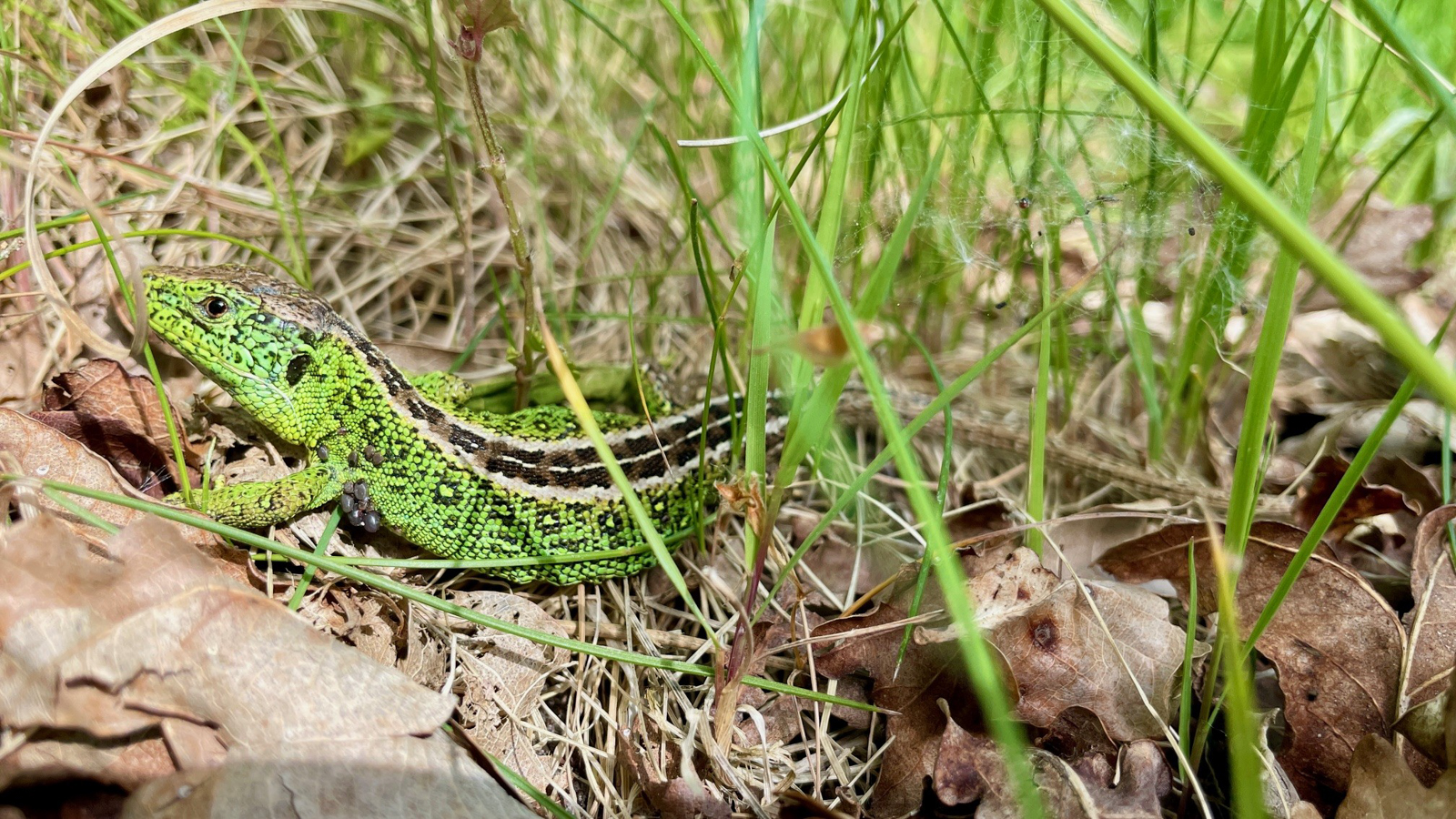
Sand Lizard, Zwanenwater
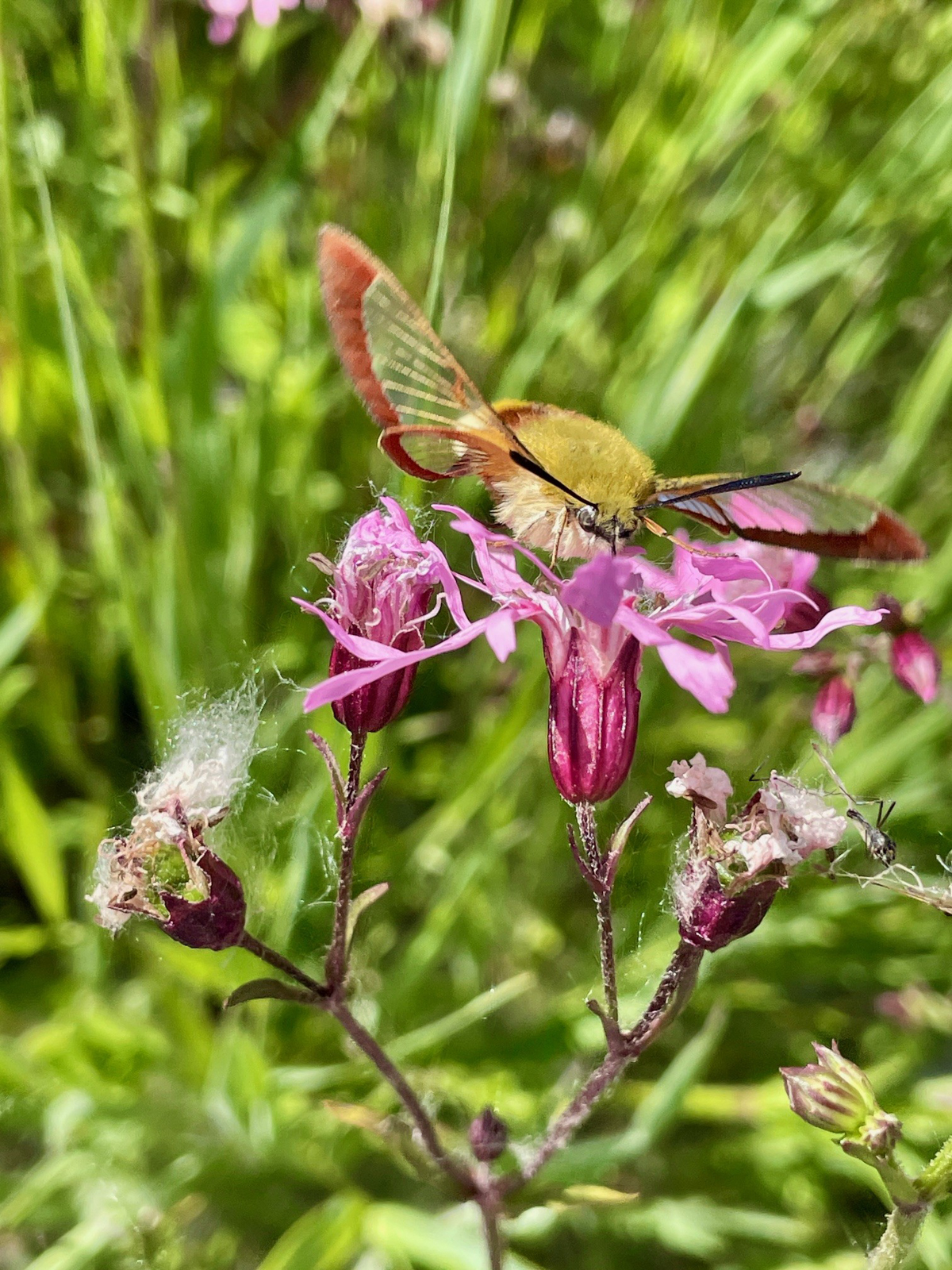
Broad-bordered Bee Hawkmoth on Ragged Robin, Zwanenwater
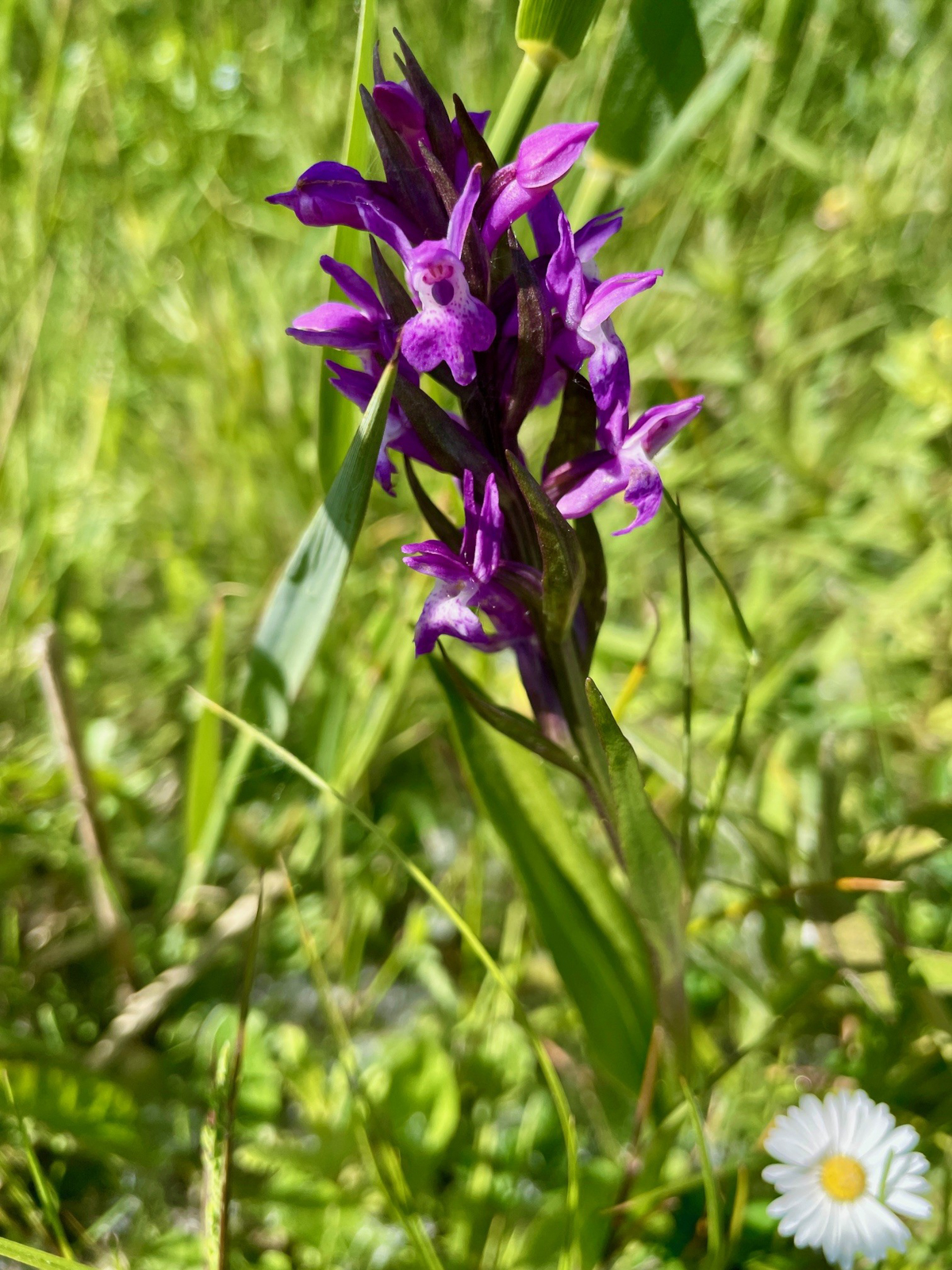
Broad-leaved Marsh Orchid, Zwanenwater
Our last stop of the tour, between Petten and Camperduin, was De Putten reserve. Originating from the middle 1800s, it consists of old claypits from which the clay was used to strengthen the adjacent dykes. The reserve contains brackish water and therefore lots of nutrients, so it’s very attractive to many species of wader, tern and gull. From the dyke, the group observed Pied Avocet, Common Redshank, Dunlin, Sandwich Tern and Eurasian Spoonbill among others.
The group enjoyed a delicious farewell dinner in Amsterdam before our warm goodbyes.


